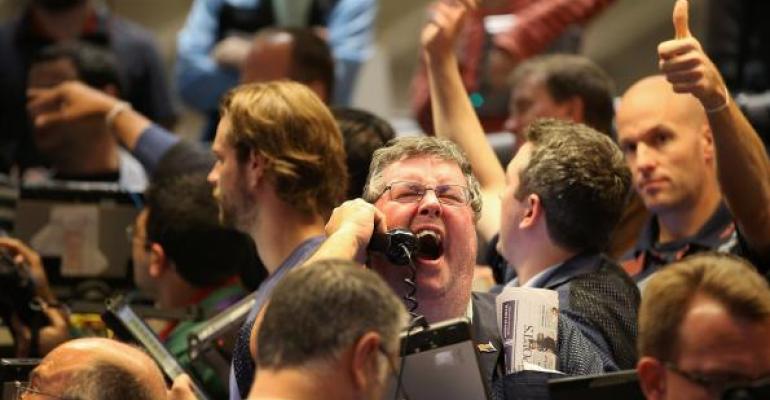By Brian Chappatta
(Bloomberg) --It’s been 18 months since the Federal Reserve’s first post-crisis increase in interest rates. Four hikes in, investors in the $14 trillion Treasuries market are laughing all the way to the bank.
The 10-year yield ended last week at 2.15 percent, after touching the lowest levels of 2017 as weaker-than-forecast inflation data stoked speculation that the Fed was erring with its tightening plans. In December 2015, before the central bank’s first hike in nine years, the note yielded about 2.27 percent.

The decline shows how the bond market continues to defy the Wall Street consensus, which was for higher yields this year. By February, hedge funds built up an unprecedented position betting against 10-year notes, and investors were debating what level would mark the start of a bear market. Three months later, the market had swung to the most bullish since 2007.
Heading into the U.S. summer doldrums, traders seem almost resigned to the notion that a 10-year yield of 2 percent looks far more achievable than 3 percent. This week brings little in the way of significant U.S. data, leaving strategists at BMO Capital Markets contemplating trading patterns and seasonality that could drive yields even lower.
“The Fed can move the front end of the curve up -- it’s really hard to get the back end to move higher,” Rick Rieder, chief investment officer of global fixed-income at BlackRock Inc., said Friday on Bloomberg Television. “The world is moving very, very glacially toward normalizing policy, but until you get other central banks start to move, our 10-year rates are going to stay low.”
Confidence in that prospect can be seen in the changing shape of the yield curve. Longer-term rates are falling while traders in the short end are bowing to the Fed’s projected tightening path. The spread between five- and 30-year debt narrowed for a third week, the first time that’s happened since August.
Rewarding Move
The long-end gains have buoyed investors.
Take the iShares 20+ Year Treasury Bond exchange-traded fund. Since mid-March, before the Fed boosted rates for the first time this year, the fund has gained 8.6 percent. That’s more than twice the return of ETFs tracking the S&P 500 Index.
Of course, traders have been known to turn bullish on Treasuries at the wrong time. After the Brexit vote about a year ago, some analysts saw 1 percent as the new target on the 10-year yield. It wound up bottoming out at 1.32 percent in July.
That’s why George Goncalves, head of fixed-income strategy at Nomura Securities International, is urging investors to underweight duration even though his group has been “devoted bulls for years.” He cited the Fed’s plan to reduce its bond holdings as a “pivotal point” that will send 10-year yields higher with measures of the term premium.
At the same time, “timing the eventual turn in U.S. rates is a process and we could very well be early on that front,” he wrote in a note Friday.
For BMO’s Ian Lyngen and Aaron Kohli, seasonal forces may keep yields at bay. The 10-year yield has declined in July in eight of the past 10 years, more than any other month, data compiled by Bloomberg show.
They point to the most recent auctions as signaling persistent demand, even with yields this low. Last week’s three-year note sale attracted the most indirect bidders since 2009.
China’s holdings of Treasuries rose in April to the highest since October. The demand is crucial, after the second-largest foreign holder of U.S. government debt reduced ownership last year. And closer to home, Investment Company Institute data showed bond funds added $8.1 billion in the week through June 7, the most in two years.
The resurgent appetite underscores the peril of calling an end to the bond rally.
--With assistance from Jonathan Ferro.To contact the reporter on this story: Brian Chappatta in New York at [email protected] To contact the editors responsible for this story: Boris Korby at [email protected] Mark Tannenbaum, Dave Liedtka




